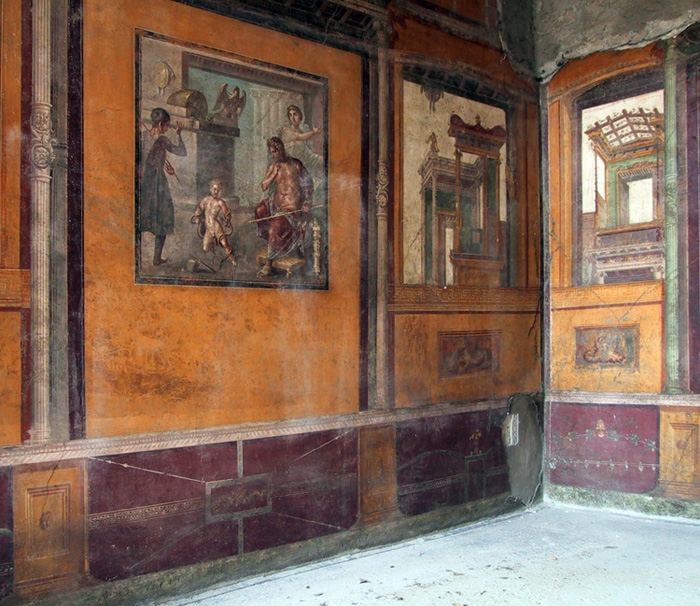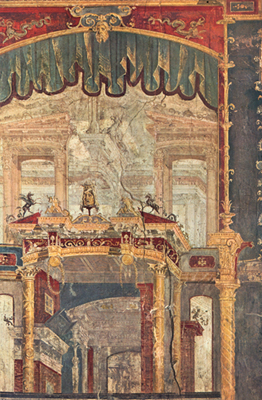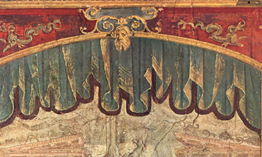

Fig. 2 - It is unlikely that drop-curtains featured in the Roman stage. The material evidence suggests that painted backdrops and not curtains rose up from a slot that ran the length of the wooden stage floor. The curtain in this painting may well be a stylised grotto or underworld reference inviting us to enter a fantasy world dedicated to Apollo. This is suggested by the broken pediment beyond which we are shown Apollonian symbols such as the Delphic omphalos within the base of the oracular tripod and the accompanying griffin, all of which are located above the demonic central mask. Fig 2 links to a similar use of this motif but in its original stone form, indicating the edge of a cave or grotto leading to a metaphysical world.
Fig. 1 is often cited as an example of a Roman stage depicted in domestic wall-painting. This panel appears to represent the typical proscenium-arched theatre, complete with draped curtains. Even the red colour of the proscenium arch evokes the ubiquitous nineteenth-century Italian theatre. Its uncanny likeness begs the question, how is it possible that this pictorial fragment, produced two thousand years ago, can represent a type of theatre that only came into existence in the nineteenth century?
The answer to the above question is relatively simple and it lies in the decor for one of the earliest Italian proscenium theatres - Teatro di San Carlo in Naples, which opened in 1737. Following its destruction by fire in 1816 it was redesigned by Antonio Niccolini who, in addition to being an architect and scenographer, was also the director of the Accademia di Belle Arti, Naples. Whilst designing the theatre's interior and the enlarged proscenium, he was also engaged in editing a 24 volume treaties on the artefacts and wall-paintings found at Pompeii and Herculaneum. Hence, it is very likely that paintings such as the Palaestra panel, may have influenced his designs for this theatre. Fausto and Felice Niccolini continued their father's work and in 1854 published Le case ed i monumenti di Pompei disegnati e descritti (Drawings and descriptions of the houses and monuments of Pompeii). In this publication they attempted to illustrate all the excavated public and private houses and monuments in Pompeii, along with numerous examples of artefacts and wall-paintings. Fausto also worked with his father on the 1844 interior redecoration of the Teatro San Carlo, which resulted in its current red and gold appearance. If wall-paintings such as the one found in the Palaestra at Herculaneum helped to shape the early proscenium style theatres, that does not make them depictions of theatres.
|

